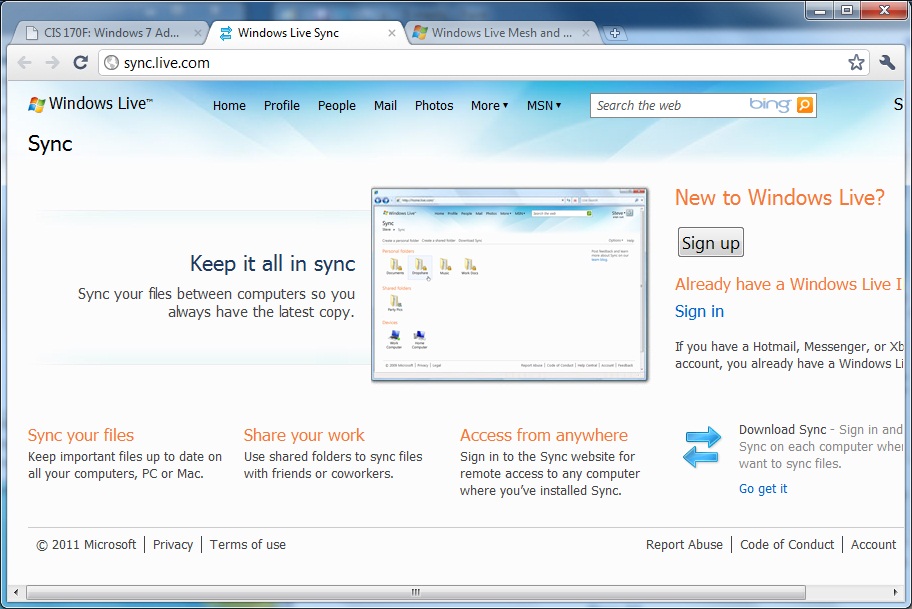Managing File Systems
Synchronizing Files Between Multiple Computers
Staying in Sync with Windows Live Sync
Windows Live Sync, formerly known as Foldershare, allows you to synchronize and share up to 20 folders. You can create personal folders for synchronization, accessible only to computers logged on with your own Windows Live ID, as well as shared folders for synchronization, accessible to whomever you permit. Folders can contain as many as 20,000 files each, with an individual file-size limit of 4 GB. With Live Sync, you can also browse remote computers logged on with your Live ID. (You cannot, however, operate such computers remotely, as you can with Live Mesh.)
To get started with Live Sync, you need to visit http://sync.live.com/ and download the Live Sync software. (Versions of the software are available for Windows and Macintosh.) Repeat these steps on each computer that you want to synchronize with.

With the software in place, a visit to http://sync.live.com/ will let you see which folders you have set up for synchronization, as well as the names of all computers that have logged on with your Live ID. You can create a personal sync folder or a shared sync folder by clicking the appropriate command at the top of the window. With either command, the software responds by asking you to select a computer from the list of available devices. To share the Chapter Notes folder that is stored on Figaro, for example, you would select Figaro and then navigate to that folder. After setting up a shared folder, the system prompts you to enter e-mail addresses of those with whom you want to share.
Synchronization can be automatic (Live Sync synchronizes whenever it detects changes) or on demand. Live Sync lets you decide when you establish the sync folder, but you can always revisit the issue. To see what the current setting is for a folder, go to http://sync.live.com/ and click the folder name. To change the synchronization mode, click it. However and whenever you synchronize, Live Sync presents an audit trail of its activity. To see what files have been added, changed, or deleted on a computer, right-click the Live Sync icon in the notification area and choose Activity.